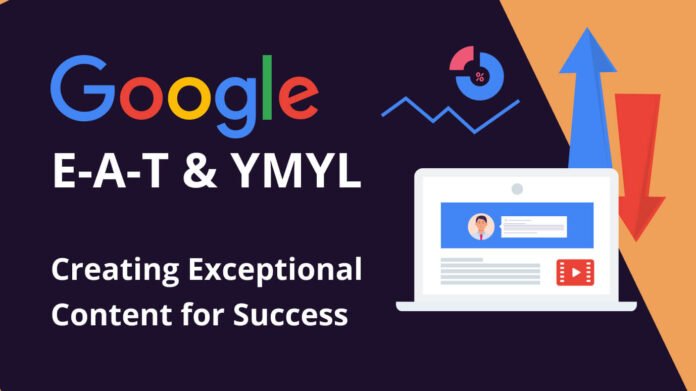Introduction
In today’s digital landscape, crafting trustworthy, high-quality content isn’t optional—it’s essential. Google’s E‑E‑A‑T framework (Experience, Expertise, Authoritativeness, Trustworthiness) is the backbone of how content is judged for both search engine rankings and real-world value. Whether you’re running a finance blog, a health site, or an e-commerce store, demonstrating E‑E‑A‑T is key to establishing credibility and elevating your online presence. This comprehensive guide dives into actionable strategies for showcasing real-world experience, highlighting your expertise, building reputation, and establishing trust with your audience. Each section is designed with clarity and user-friendliness in mind, ensuring content that’s both SEO-smart and user-centric.
By the end, you’ll have a fully fleshed-out roadmap—from clear author credentials to depth-rich insights—to help your content resonate with both readers and search engines. Let’s explore the essential components needed to transform your content strategy.
1. Understand the Core Principles of E‑E‑A‑T
Experience
Real-life experience is powerful. Include personal anecdotes, first-hand case studies, and original insights. Visuals like original photos or data charts reinforce authenticity, making your content stand out from generic pieces.
Expertise
Demonstrate your knowledge through author credentials, deep-dive analysis, and precise information. Explain complex ideas clearly, using terminology relevant to your field to show in-depth understanding.
Authoritativeness
Build reputation by earning recognition both on-site (like expert quotes or endorsements) and off-site (such as guest posts or mentions). Linking with other trusted sources reinforces your authority.
Trustworthiness
Be transparent: include secure site features, clear policies, updated facts, and authentic reviews. Show your audience you’re credible and reliable.
2. Establish Clear Authorship & Credibility
- Bylines & bios: Display author names, images, credentials, and relevant experience.
- About page link: Connect each article to a detailed author profile.
- Update dates: Show when content was last updated to signal ongoing accuracy.
- Credentials display: Highlight certificates, education, or achievements relevant to the topic.
3. Showcase Lived and First-hand Experience
- Personal anecdotes: Share your own story—what challenges you faced, and how you solved them.
- Original evidence: Include screenshots, charts, or photos you created.
- Case studies: Walk readers through real scenarios, your actions, and measurable results.
4. Dive Deep: Make Content Rich & Accurate
- Comprehensive coverage: Address all relevant subtopics; no omissions.
- Structured layout: Use headings, bullet lists, tables, and bold text for readability.
- Evidence-driven: Cite facts, statistics, and findings that support your points.
- Balanced viewpoints: Acknowledge alternative perspectives to show depth and fairness.
5. Build Authoritative Signals
- Expert opinions: Gather quotes from recognized professionals in your field.
- Backlinks: Guest posts or citations from reputable outlets raise your profile.
- Collaborations: Partner with recognized names to bolster your reputation.
6. Enhance Trust Through Transparency
- Secure setup: Ensure your site is HTTPS-secured.
- Clear policies: Make privacy, terms, and disclaimers easily accessible.
- Real reviews: Feature authentic testimonials and user feedback.
- Editorial standards: Explain your review process, fact-checking, and quality control methods.
7. Deliver User-Centric Formatting
- Answer intent immediately: Outline key takeaways near the top.
- Readable style: Keep paragraphs concise and include whitespace.
- Visual aids: Use infographics, images, and charts to support text.
- Helpful links: Link to related internal content to guide further learning.
8. Optimize for Searcher Questions & SERP Features
- FAQ mining: Identify common questions and address them directly.
- Clear answers: Provide concise, self-contained responses ideal for featured snippets or “People Also Ask”.
- FAQ format: Implement structured question-and-answer formatting for easy indexing.
9. Maintain & Update Content Regularly
- Content audits: Periodically review for accuracy, relevance, and quality.
- Update signals: Add edited dates and list of changes to show improvements.
- Expand over time: Add new sections, data, or examples as things evolve.
10. Align Technical & User-Experience SEO
- Speed & performance: Ensure fast loading and mobile-friendly design.
- Engagement metrics: Track bounce rate, dwell time, and repeat visits.
- Easy navigation: Implement clear menus, breadcrumbs, and sitemaps.
FAQs
1. What is E‑E‑A‑T and how does it affect SEO?
E‑E‑A‑T stands for Experience, Expertise, Authoritativeness, and Trustworthiness. It guides Google in identifying content that is trustworthy, credible, and user-focused. While not a direct algorithmic ranking signal, aligning with E‑E‑A‑T principles leads to better content quality and search visibility.
2. How can I add real experience to my writing?
Add value by sharing personal stories, original case studies, and first-hand photos or data from your own work. This shows you’ve genuinely engaged with the topic.
3. Does having credentials improve E‑E‑A‑T?
Yes, showcasing qualifications—through bios, certifications, or specialist knowledge—demonstrates expertise and helps build authority in your niche.
4. How do I boost authoritativeness on a small site?
You can build authority by collaborating with experts, earning citations through guest posting, and collecting testimonials or external references—even small steps can accumulate influential signals over time.
5. What steps ensure content is trustworthy?
Use HTTPS, include clear policies, reference multiple sources, and publish real user feedback. Regularly update content and be upfront about your process.
What Is Huzoxhu4.f6q5‑3d Used For?
Conclusion
Mastering E‑E‑A‑T is a deliberate combination of showcasing genuine experience, expert knowledge, reputation, and transparency. By sharing personal insights, highlighting credentials, building external validation, and ensuring trustworthy practices, you create content that resonates with both users and search engines. The result is deeper engagement, enhanced reputation, and stronger SERP presence—built on a foundation of real value and credibility.
User-first design—clear answers, structured formatting, and ongoing refinement—ensures your content endures and evolves. Instead of chasing algorithms, focus on meaningful connection and genuine impact. With this guide, you now have a clear roadmap to craft content that isn’t just found—it’s trusted, valued, and remembered.
